The Evolution of the ERP market has been a long and steady process, starting from its introduction to businesses in the 1960s.
The first ERP system was developed by the American company General Electric (GE) for managing inventory within their company.
Today, there are many different types of enterprise resource planning systems available on the market.
This blog post will discuss some of these changes and how they have evolved over time.
With each new generation, enterprise software has become more advanced – with better reporting capabilities and more accessible user interfaces providing access to all data across an organisation at any given point in time, as well as integration between people-centric applications such as Customer Relationship Management (CRM), Human Resources(HR), Inventory Management, and Manufacturing Operations.
The Evolution of Enterprise Resource Planning (ERP) systems has been enabled by the development in server, hardware, networking, and client software technologies as well as structural changes to enterprises themselves; for example:
The growth of global outsourcing networks, increasing competition from virtual organisations that are not bound by location or geography, increased globalisation of markets with more significant cross-border trade and investment flows among nations.
One emerging trend is how ERPs are being developed based on business processes rather than applications within a particular industry vertical – so they can be applied across industries without needing separate bespoke solutions for each one. This approach provides companies with more flexibility when it comes to managing cost reductions while still implementing specialised features such as IoT functionality which will integrate and automate many functions.
Companies are also doubling down on investments in ERP technology as the backbone for their digital transformation strategies. This has led to a sharp increase in demand for services and products that help organisations transition from legacy systems, implement new technologies, integrate data sources across platforms, or take advantage of cloud-based solutions.
Offering an integrated suite of applications that covers every aspect of day-to-day operations – including Finance and Accounting, Supply Chain Management (SCM), sales performance management (SPM), and customer relationship management (CRM), among others – is becoming more critical than ever before.
The increased focus on process efficiency will ultimately lead manufacturers toward ERP deployments designed to meet specific needs such as predictive analytics capabilities, artificial intelligence tools for automation purposes, relocating inventory according to customer preferences, and so on.
The Evolution of the ERP market will also depend heavily on how today’s technology-driven economy evolves as a whole.
ERP system is an integrated software package that combines functions across multiple business areas such as accounting, inventory management, order processing, etc. These systems are designed to help organisations manage their operations more efficiently by having all of the relevant data in one place. The Evolution of the ERP market depends heavily on how today’s technology-driven economy evolves as a whole.
Contents
- 1 Why do Companies need to have an ERP System?
- 2 The Evolution of Enterprise Resource Planning(ERP) Market
- 3 How can organizations choose which type of software they want for their company’s needs:
- 4 What are the benefits of ERP in today’s era?
- 4.1 You can Achieve Higher Levels of Quality
- 4.2 You can Become More Profitable
- 4.3 Eliminate Waste & Improve Efficiency
- 4.4 Increase in Market Competitiveness
- 4.5 Enhance Customer Satisfaction
- 4.6 Reduce Lead Time and Inventory Cost
- 4.7 Improves Productivity of Employees
- 4.8 Provide a Better Understanding of Company Performance
- 5 Future of ERP Systems
- 6 To Sum Up
Why do Companies need to have an ERP System?
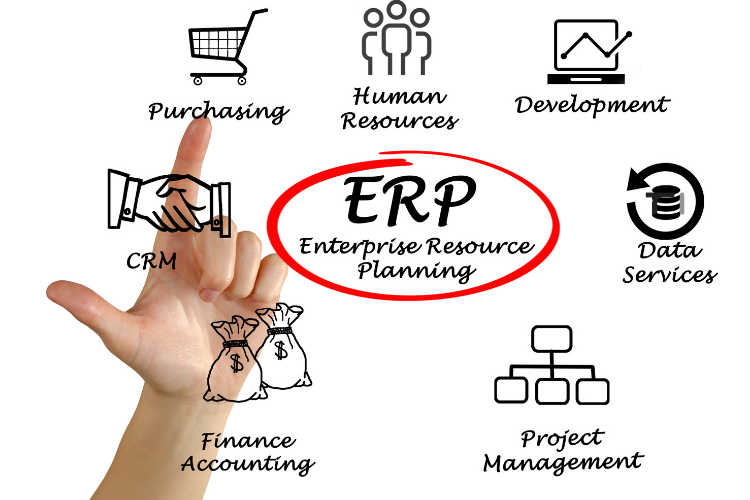
Companies need an ERP system for three primary reasons:
- To increase productivity through better automation;
- To improve collaboration between departments within the organisation; and
- To improve the visibility of critical data.
If your company is looking to increase productivity through better automation, an ERP system can help you lower costs and remove the need for redundant data entry. An ERP system will also improve collaboration between departments by providing a common source of truth as well as enterprise-wide visibility into inventory levels, production schedules, etc.
Even if you are a small company starting out with 10 employees and are developing your production processes from scratch–an ERP might save time later on by making sure everyone follows the process the same way.
The Evolution of Enterprise Resource Planning(ERP) Market
As technology continues its Evolution toward convergence with artificial intelligence and augmented reality systems, it’s easy to see how our expectations about what we want out of business software will evolve as well.
Some people may argue that these changes have created opportunity; others worry about disruption or decline in profitability. But ultimately, this is just one more example where innovation creates change — both for consumers and for enterprises.
To stay competitive and profitable, businesses now need a single source of truth for their operations so that everyone is on the same page: from accounting to sales, marketing, and customer service. And they also want an ease-of-use interface as well as access in real-time across all devices while working with data sets that are comfortable whether you’re sitting at your desk or standing in line at Starbucks waiting for your latte fix.
It’s possible today because business software has evolved over the years into something more holistic that supports increasingly diverse needs and expectations around how we work — no matter what type of device we use or where we happen to find ourselves when inspiration strikes.
How can organizations choose which type of software they want for their company’s needs:
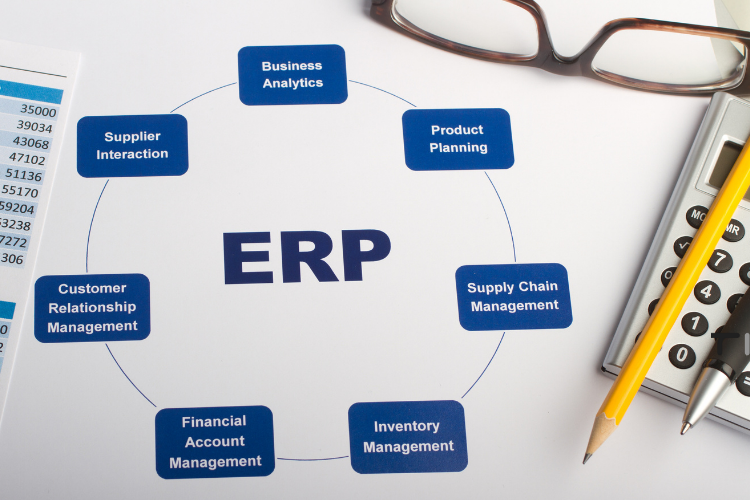
Through converging technologies like artificial intelligence(AI) and machine learning, new generations of ERP systems are able to anticipate what information users might need and make it available with a few clicks or taps.
“It’s easy for people to start doing things in ways that weren’t possible before,” says Dinesh Raghuveer, vice president at SAP India. “So much is happening on the user interface side.”
The Evolution of enterprise resource planning has also allowed companies like Procore Technologies Inc., which provides construction project management software-as-a-service(SaaS), to develop an intuitive system that can be adapted for any size company without sacrificing functionality and maintainability.
In addition to more powerful search capabilities, Procore now offers notifications about upcoming tasks automatically to make sure teams are updated for the changes.
“It’s about the evolution of construction project management,” says Ron Washam, president, and CEO at Procore Technologies.
The many advancements in ERP have helped other industries evolve as well. While there are a few legacy systems that still need to be upgraded or replaced altogether, most companies are able to take advantage of new software without replacing their existing system.
Organisations are choosing the type of ERP based on their needs, considering the software’s ability to help them manage their operations.
The software should be able to enable organisations to create and implement new strategies.
Some people still use paper calendars, so it is important not to force all stakeholders into a new system right away if they don’t see the value in it or need some more training on how to use it effectively.
Once the software has been chosen, organisations need to choose which features they want in their ERP system and then request those specific tools from the vendor or software developer.
If there are not enough professional resources on hand to train people how to use the software effectively, it will make things more complicated than necessary for your employees and hinder productivity.
Organizations should set up meetings with potential vendors before making any decisions. During these meetings, they should ask questions about the software and any additional features that might be available.
They will also want to inquire as to how much it would cost for them to implement a system such as this on their own in-house.
There are four types of ERP systems: Enterprise Resource Planning (ERP) applications, Customer relationship management (CRM), Supply Chain Management (SCM), and Business Intelligence/analytics tools or platforms.
Each type is designed with different needs in mind, but all can benefit an organization by making operations more efficient while reducing costs.
What are the benefits of ERP in today’s era?
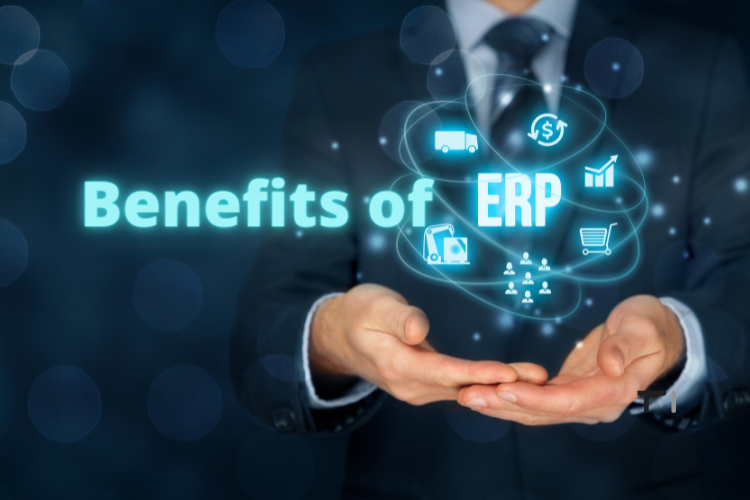
Evolution has also lead to new features added, leading to more benefits for those using ERP systems.
You can Achieve Higher Levels of Quality
With the Help of ERP Software, Company can achieve higher levels of quality by integrating all their processes.
It Improves Operational Efficiency in the company that helps employees to execute tasks by using the integration between various applications, increasing efficiency and reducing errors.
It Allows a Business to Connect with Customers in the New Era of Digitalization
ERP system provides all-inclusive software that enables companies to have better connectivity and communication with their customers, as well as provide them access to more information about products through mobile devices making Businesses Become More Efficient by streamlining processes and automating tasks within an organization.
This leads not only to higher productivity but also improves quality while decreasing costs because it eliminates human error at some points of execution stages, such as data entry or inventory management for example.
You can Become More Profitable

With an ERP system, you will be able to manage all your operations in a more efficient manner which increases profitability.
ERP also Reduces the Long Term Cost because most software customizations will have already been done for them when the system is initially set up; companies won’t need to spend time or money on future changes that may come with upgrades or updates. This also reduces costs associated with training new staff members on how to use a different application should one-stop working at some point in the future. And lastly, if there’s a problem with an individual part of any single module, it could bring down other modules as it is all linked.
A company’s processes are often scattered across different departments and systems, but with ERP, the entire process is managed from start to finish via one single location on the computer. This saves time as well as money by eliminating redundancies that would otherwise exist when handling data separately.
All of these benefits add up to make ERP software worth investing in for any company looking for an edge over their competition.
Eliminate Waste & Improve Efficiency
ERP software helps eliminate waste and improve efficiency throughout the company while also reducing costs for staff members who are assigned different tasks based on their skillsets. The organisation becomes more profitable because they’re not wasting money by producing products that don’t fit demand or making too many mistakes when managing inventory.
One thing I would like to mention is that this type of process might seem time-consuming at first, but it pays off over time since there’s less room for error with automated systems than those run manually. It only takes 6 months to be fully efficient with ERP System though using it is a matter of days.
One of the benefits is that ERP software makes it easier to manage a company’s assets.
With this type of system, it becomes easy for management and employees alike to know what they have on hand and where things are located.
This reduces instances when items go missing or if staff members accidentally order too many supplies because inventory can be tracked down in an instant with ERP software- which also eliminates waste!
Production time is shortened considerably thanks to automated processes that help companies run more efficiently without relying solely on human input.
The best part? Nearly every aspect of a business can be managed using ERP software, so there isn’t really anything else you need outside of this one-piece for everything under control.
Increase in Market Competitiveness
Most companies with ERP Systems already have a competitive edge. This gives the opportunity for growth and success by:
Empowering Employees with Information
ERP tools are designed to empower employees by providing them instant access to information through dashboards, reports, and alerts. It allows all stakeholders from company executives down to frontline staff members to make better decisions faster and achieve their objectives. With ERP software at your disposal, you can leave nothing up-to-chance!
A Competitive Edge over Traditional Businesses
The benefits that come along with implementing an ERP system do give a company much-needed resources, which may result in greater revenue opportunities or increased profits in your business.
A Competitive Edge over Global Competitors
ERP software provides a competitive edge, which allows for optimal customer service and greater profitability. With ERP, you can adapt to market fluctuations quickly by adding new products or services with minimal risk. This also gives your business an advantage when competing against other global companies, as they may not have the same type of system in place that will allow them to adjust their production schedules accordingly. A strong IT strategy is essential if a company wants to succeed in today’s cutthroat marketplace!
Enhance Customer Satisfaction
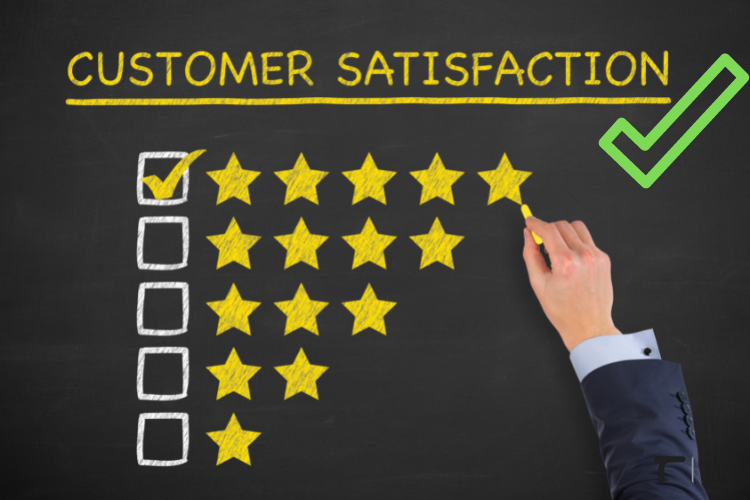
This is a no-brainer; all the efficiency in the company helps make the product better and faster for the customer!
ERP software increases customer satisfaction by automating tedious tasks and allowing employees to make more decisions on their own. This makes them feel empowered, which creates a company culture that favors good customer service.
Customers tend to be happier when they know someone is listening to them and cares about their needs.
The end result of this is satisfied customers who will come back again in the future.
It also Reduces Employee Turnover: A lot of times, people don’t stay because they are unhappy with how things operate at work or because there aren’t enough opportunities for advancement within the company.
In contrast, ERP systems allow managers greater flexibility around employee schedules, so it’s easier to keep great talent on board while giving them the opportunities they need to grow.
Customers hate Paperwork, People are usually happier when there’s less paperwork or forms, and that’s often true with ERP systems as well.
ERPs also make it easier for managers to keep track of company progress in a way that is more efficient than paper-based methods.
Using an ERP system can help companies save time and money on things like shipping costs by providing real-time updates and eliminating unnecessary trips into the office.
This makes them feel empowered, which creates a company culture that favours good customer service.
Customers tend to be happier when they know someone is listening to them and cares about their needs, and all the on ScreenScreen with few clicks.
Reduce Lead Time and Inventory Cost
An ERP system that collects information from all areas of the business may be able to tell a manager if there’s any need for more inventory before it becomes too late. The same is true when shipments are arriving – as soon as they get off the truck or aeroplane, managers know what needs to happen next, which saves valuable minutes and hours because now these decisions don’t have to wait until someone comes into work in the morning.
Time savings is with AI integrated into every vendor, customer, and employee, making an integral part of the company’s supply chain.
This means that information is transferred seamlessly from one person to another with little interruption in time or effort spent by employees who may be working on other tasks at any given moment.
The result for customers is improved speed – they get what they need faster than ever before while your business saves money because you don’t have to invest as much in inventory costs (which are lowered through better ordering).
Improves Productivity of Employees
Productivity of employees is improved by ERP software because they are able to be more agile and adaptable, which in turn leads to lower costs.
This can also help with a company’s productivity and its ability to create new competitive advantages through data integration.
It will also lead them towards the goal of being proactive instead of reactive when it comes time for making decisions that affect the business as well as improving customer service.
ERP systems have come a long way since first coming into existence in the 1950’s – from early stages where companies had one user on an older system, developed specifically for businesses at this stage; all the way up until today where there are multiple users using different types of devices (smartphones or tablets) giving important company update on hand and making critical decisions with few touches on Screen.
The most recent Evolution of the ERP market is with the introduction of cloud computing. Cloud services, in particular, have been growing exponentially over the past few years and are now being incorporated into more than just one aspect of business operations.
With its ability to offer virtually unlimited access to data from anywhere on any device, it’s no wonder that many companies are choosing this route when deciding their company’s IT infrastructure needs.
A system like an ERP can be a powerful asset for a small or medium-sized company looking to expand but struggling with resources. The economies of scale (reduced costs per unit) will allow them better competitive positioning by leveraging technology through an ERP system.
Provide a Better Understanding of Company Performance
Erp aids the company in understanding performance by providing visual representations of all the significant measures of their business and industry. The company needs to monitor, such as the status of its inventory levels and sales forecasts.
One does not need to rely on interviews or surveys but can rely solely on objective numbers to measure whether actions improve or worsen a company’s performance 10, 25 per cent, etc.
The most valuable components for understanding a business’ health include Sales Trends, Cost Analysis Modeling, Expense model analysis, Production Planning Analysis (PPA), Quality and Performance Appraisal System (QPSA), and Process Efficiency Analyzer (PEA).
A company’s management can use ERP to understand and improve productivity, profitability, and the employer-employee relationship.
Future of ERP Systems

ERP systems use a lot of technology, databases, and information to provide for all management requirements in a business.
The true future in ERP Systems looks toward integration across different technologies that are currently fragmented into single services such as text, video, voice chat (and others), so if an issue arises with one service area, the system will be able to explore related data from other service areas to help identify and resolve the issue.
ERP system is gradually shifting towards a cloud computing environment, in which companies will use the software as a service to offload data centres and store their enterprise information on the web.
Currently, developments are being made in this direction by Microsoft with Azure, Amazon has AWS Business Applications for SMBs, and Oracle offers ERP on Demand. It’s certainly not too far-fetched of an idea that we’ll live in an entirely cloud-based world within a few years’ time.
In the future, ERP systems will be able to transform into a more responsive system that can dynamically adjust as businesses change and grow.
The biggest challenge for Enterprise Resource Planning (ERP) is how easy it makes business management tasks.
The evolution process begins with the recognition of gaps in current technology, which then leads to new software development to fill those gaps.
We predict that the future of ERP is in making our system as flexible as possible for customers to be able to customise it to their needs and business objectives, make it easy for anyone in the organisation to use – not just IT employees or specialists – and adapt it on the fly as new platforms, hardware, data sources, and end-user devices emerge.
The last thing people want is another complicated system that they have no control over – especially with so many ERP packages out there already. Being able to customise an application that works from any device will allow businesses of today to embrace tomorrow’s innovation without worry about existing technology constraints.
To Sum Up

To Conclude this topic on the Evolution of the ERP market, I would like to make my point clear on how important it is for a company to rely solely on objective numbers. It can be used as an instrument in order to measure what actions are taking place that may improve or worsen the company’s performance from time periods before and after interventions were made at different levels.
One can note the Evolution of the ERP market by its increased influence in the marketplace, and it will continue to do so.
The rate at which firms are switching to cloud-based software is increasing dramatically, and this move will only push hard on ERP’s popularity — especially since cloud-based systems are future-oriented.
As more suppliers offer CRM functionality as an add-on module or through embedded channels, opting for traditional core business applications like EIS (Enterprise information system) and BI/BW (Business intelligence) modules over SaaS will be difficult for some organisations.
Though, the market is changing, and ERP providers need to be ready to adapt quickly in order not only to survive but also thrive.
ERP market is poised to grow thanks to four mega-trends.
These include increasing adoption of cloud computing and mobile technologies across all markets, the transformation in technology spending towards software and away from “another pound on the hardware side, “a significant increase in more high growth markets such as China and India, and also a shift for organisations away from just trying to fix the fundamental problems that arise with ERP systems rather than building new modules or functionality within their existing system.”
ERP was long considered business-critical by businesses across countries, geographies, industries — but now is being threatened by other solutions tailored to specific needs. ERP solutions will have some challenges moving beyond legacy workflows as there are often barriers in every industry.
ERPs have steadily evolved over the years as new technologies have become available to date.
The advent and Evolution of ERPs have been rapid, with each stage scaring legacy systems into obsolescence. ERP providers are also evolving, and this has led to a competitive market that is driving down costs for sales but pushing up prices in other areas like customisation services which can include linking different ERP applications within an enterprise or adjusting system configuration settings for specific users needs.
In response, many enterprises are looking to change their IT approach from an acquisition-focused plan (buying closed systems) to an open system investment one that relies on external expertise for the most critical decisions required during implementation.
Legacy vendors are trying to move upmarket by providing cloud-based solutions that offer the flexibility of open systems.
However, two things are certain: Firstly, ERP vendors that do not evolve will be left behind on a technology curve; Secondly, and more importantly, enterprises that do not adopt this model as soon as possible may lose out to competitors who have already started down this path.
The Evolution of the ERP Market offers insights into how these trends in innovation can help you make informed decisions about your legacy system needs so that you don’t get caught up with obsolete or ineffective industry-standard solutions. You may be wondering, “What should I do to keep my business competitive?” I personally recommend checking out the top 7 Picks for ERP tools selected by Technicali.
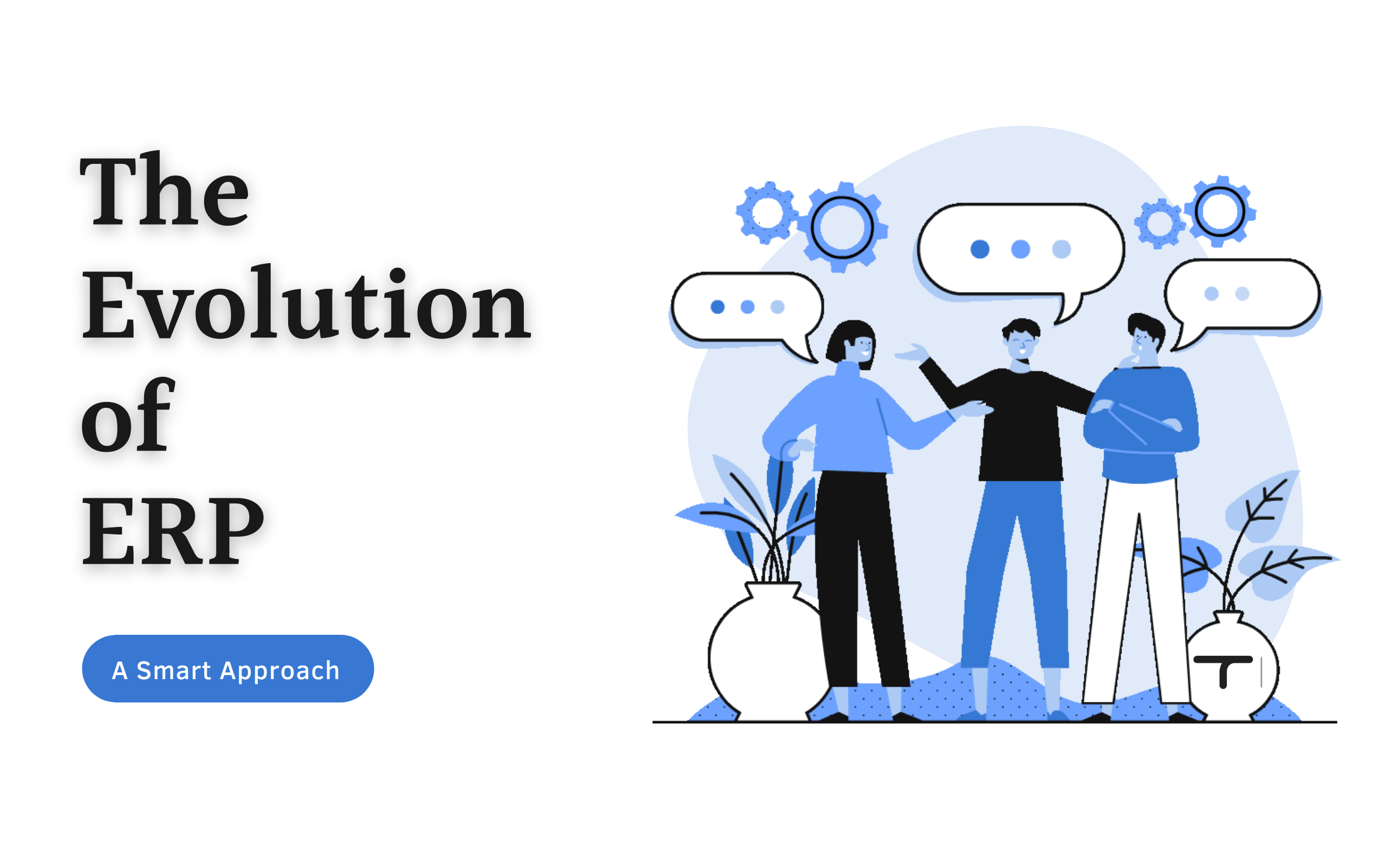

[…] The Evolution of the ERP […]
Great information. Detailed.